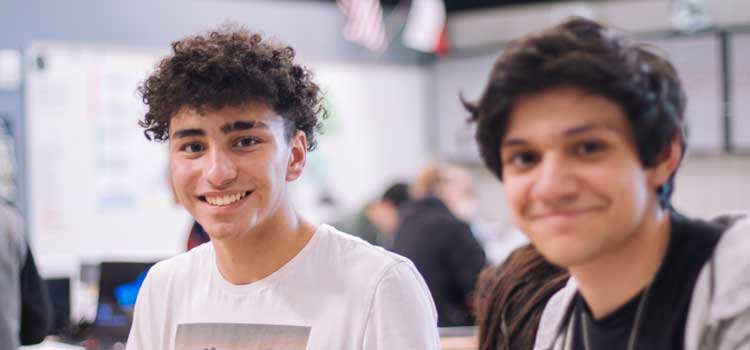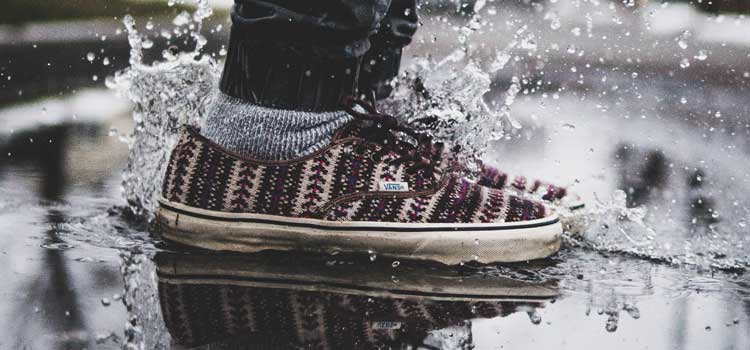Addressing racism and white privilege at summer camp is not something that can be done in one sitting—it requires personal education and continual effort. The goal of our three-part blog series is to help you feel empowered to initiate conversations with your staff using six steps that will give you some ideas and tools to do so.
If you haven’t read our first post, we suggest you go there first. The advice we offer covers the first two steps in our suggested process:
- Acknowledge that racism exists at your camp
- Adjust your mission statement
This second post covers the next two steps in the process of addressing race and white privilege at summer camp with your staff. They are:
- Involve your entire team
- Create a common level of knowledge
One thing that we have both found from our experience, and from doing anti-racist work, is that it is easy to feel personally and solely responsible for being the one to initiate conversations and implement change. While White people do need to assume responsibility for anti-racism work, it is important to recognize that it will be extremely difficult, if not impossible, to implement this change in your camp alone. The change and effort you implement on an individual level has to be met with a community effort within your camp for there to be effective change and growth.
Implementation is important, and so is the process through which you take these actions. A critically important element of this process is that, as a camp leader, you can’t do this work alone.
Implementation is important, and so is the process through which you take these actions. A critically important element of this process is that, as a camp leader, you can’t do this work alone.
3. Involve your entire team to recognize white privilege at summer camp

Race and privilege at summer camp are complex topics and it’s difficult to unpack everything related to these issues on your own. When you involve your staff in both the learning and solution-building process, they learn with you and you can work together to implement change. In order to build an effective and supportive team camp-wide, we suggest that you bring together a small group, or an inner circle, of counselors and other staff members who are passionate about addressing race and privilege at summer camp.
How to assemble the inner circle
The staff members who make up this team should be handpicked by you based on their passions, values, and work ethic. They should be passionate about addressing white privilege and racism at your camp and should have a willingness to problem solve. Change needs action, so you want these staff members to be prepared and eager. You may have already had staff members express these interests to you or you may need to simply ask your staff as a whole to see who’s interested.
We also encourage you to have intentional conversations with your BIPOC staff members. Do not assume that BIPOC staff want to be included in this work and do not push them out of the process because of your own fears and insecurities. It is crucial to ask these staff members if and how they’d like to be involved and then respect their decisions.
Purpose and Goals
It should be clear to everyone on your staff that the goal of this team is not to discuss whether racism exists at your organization or not. You are not creating a debate team. This group is there to address ways that your camp can be a safer space for everyone. The main goals of their work should be:
- Evaluate problematic issues
- Develop and oversee next steps
You may want to use some time during your first meeting with your inner circle to plan specifics about how to report problems and share new initiatives with the rest of the staff.
Two steps to take
Every camp is different, and each committee is going to build a process for addressing race and privilege at summer camp that works for your specific community. That said, two approaches we think can work for most camps are:
- Initiate conversations – Your inner circle members are the igniters of intentional conversations around your camp, as well as role models for the use of inclusive language and vocabulary. When it comes to complex issues like race and privilege, some staff may feel more comfortable to discuss and ask questions with their peers. Your inner circle members are perfect for this role; encourage your staff to go to them with questions and concerns!
- Create a culture of accountability – Your inner circle is there to keep you accountable in making a continual effort and to make you aware of any blind spots or gaps in knowledge you may have. For example, helping with language and terminology in a session, helping to bring in new ideas and perspectives, or helping you to recognize where there is a need for improvement in your camp (e.g. recognizing that some of the traditions/names used at your camp are appropriative). They are also there for encouragement and support—not feeling alone can give you the confidence and motivation to get things done and to ensure you don’t burn out.
It should be clear to everyone on your staff that the goal of this team is not to discuss whether racism exists at your organization or not. You are not creating a debate team. This group is there to address ways that your camp can be a safer space for everyone.
4. Create a common level of knowledge

It can be hard to know where or how to start in terms of who your audience is and how much they already know or don’t know about white privilege and race at summer camp. You’ll need to dedicate time for education and discussion as a team. For example, you can have a session on the history of anti-racist work, vocabulary to know and adopt in anti-racism, and what white privilege is and the consequences of it. You can also share resources with your staff and even invite experts on the topic to run a workshop or session. You want to create a common level of knowledge so that no one feels left out of the conversation and so no one feels afraid to be a part of these conversations because of lack of knowledge.
White privilege exists
The most fundamental point to address when starting this conversation with your staff is the existence of white privilege and the true consequences of it.
Our society, and the institutions within it, is built on the oppression of certain members and groups of people. All White people, no matter how committed they are to being anti-racist, continually benefit from white supremacy and the oppression of the BIPOC community. The existence and consequences of white privilege need to be acknowledged and accepted before any attempts can be made to dismantle it, both in and out of our camp communities.
The power of microaggressions
We’re often taught that racism exists as these overt and obvious acts. We’ve heard many statements where people try to prove that they aren’t racist, such as:
- I don’t say the n-word
- I would never beat up someone because of their skin color
- I’m friends with you so I’m obviously not racist
These statements are examples of the oversimplification of racism and what it consists of. The second step you can take with your staff is educating them about microaggressions, which are more subtle (and sometimes unintentional) forms of racism, and how they cause harm to BIPOC.
In camp communities where unity and respect are emphasized, overt acts of racism are likely to be addressed. For that reason, it is more likely that racism will present itself in the form of microaggressions, which is why it’s so important to be aware of the different types, and to get better at recognizing them in yourself and in others.
All White people, no matter how committed they are to being anti-racist, continually benefit from white supremacy and the oppression of the BIPOC community. The existence and consequences of white privilege need to be acknowledged and accepted before any attempts can be made to dismantle it, both in and out of our camp communities.
Types of microaggressions

Microinvalidations: These can make BIPOC feel invisible and frustrated
Examples of microinvalidations:
- “I don’t see color”
- “We are all human beings”
- “All lives matter”
- “You’re so sensitive/stop being so sensitive”
- “I know what it’s like because I’m …” (usually used when a White person tries relating something they’ve experienced to racism experienced by BIPOC)
Microinsults: These can affect the self-esteem of BIPOC
Examples of microinsults:
- “You sound/act White”
- “You’re pretty for a Black person”
- Commenting how someone in the BIPOC community doesn’t “act” or isn’t like others of their ethnicity
- “Can I touch your hair”
- Implying that someone accomplished something (e.g. getting a job) because of their skin colour
- “Can I call you _____, I can’t pronounce/say your name”
- “Your people…”
Microassaults: These can make BIPOC feel unsafe or unwanted
Examples of microassaults:
- Using racial slurs
- “Brown/Black/Asian people aren’t really my type” (it’s a generalization rooted in racism)
- “______ people scare me”
- Actively avoiding BIPOC
- Racist jokes (side note: there is no such thing as a racist joke… there are jokes, and then there is being racist)
Being racially fetishized: These are dehumanizing and centralize race as the main characteristic of a person (less commonly acknowledged as a microaggression -they are essentially microaggressions in the veil of compliments)
Examples of being racially fetishized:
- “You look exotic”
- Being called “spicy” or “chocolate” when referring to someone’s race
- Obsession with having/wanting biracial kids
- Being a token friend/member of a group
Racial gaslighting: These appoint blame onto BIPOC (and usually happen in the context of someone calling someone out for being racist)
Examples of racial gaslighting:
- “If you said it more calmly/rationally, people who probably listen to you more”
- “What I said/did was not racist”
- “Racism doesn’t really exist anymore”
- “It was just a joke”
- “______ people are racist too”
- “Why do you always have to bring up race?”
- “Are you sure that’s what happened?” /“Are you sure you didn’t just misinterpret it?”
- People who play “devil’s advocate” in conversations about race
- “In my opinion, I don’t think they were being racist/I don’t think that that’s racist”
This isn’t an extensive list of microaggressions and examples—as we mentioned in our first post, doing your own research will help you get better at recognizing them. Then you’ll be equipped to empower your staff to recognize and avoid them as well. Acknowledging that microaggressions are acts of racism helps your staff make important and immediate adjustments to the language they use.
Oppression and white privilege are not up for debate
The first two of our six suggested steps set the foundation for the process of initiating conversations with your staff about race and white privilege at summer camp. By acknowledging that racism exists at your camp, and by writing a mission statement that reflects your camp’s goal of inclusivity and safety, you set the stage for what you expect from your team.
The two steps in this post—involving your entire team in this work and making sure everyone has the baseline knowledge to do so—are about putting the mechanisms in place to formally do this work.
All four steps lead into the final two elements of the process we’re outlining in this blog series:
- Make a list of action steps
- Continuously evaluate
What all six steps have in common is that they are built on the understanding that oppression is not up for debate. As camp professionals, we need to make it clear that any person’s experience of oppression is valid and real, even if we can’t understand it.
